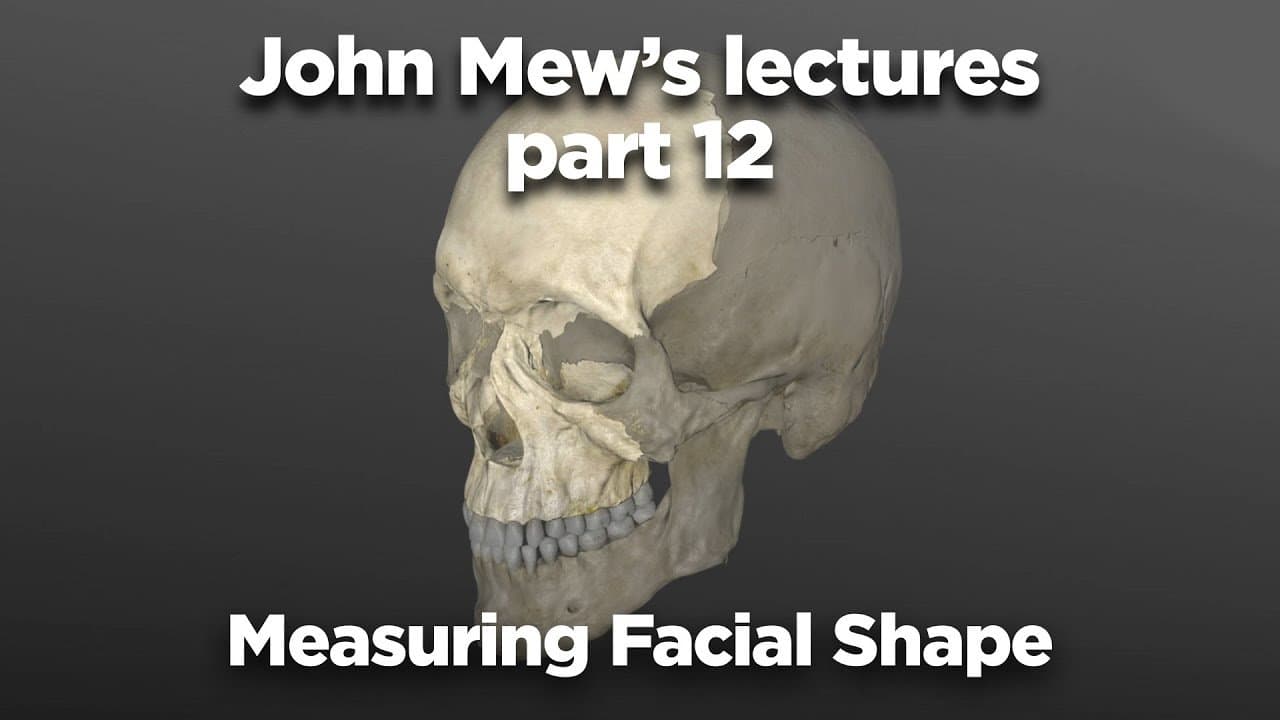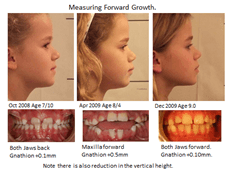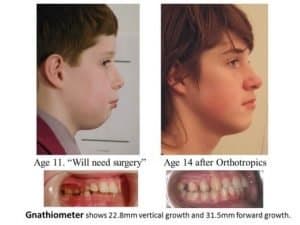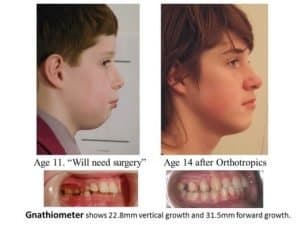

Nov 03,2020
Orthotropics 12. Measuring Facial Shape
Precis. Brodie and Bolton developed different ways to demonstrate facial form, especially of the profile. Most orthodontic super impositions are based on the Sphenoid bone but this may not be as stable as we have believed. The Gnathiometer uses the Frontal bone for superimpositions which enables the forward growth of the Gnathion to be measured to the nearest millimetre.
Lecture 12. I have been interested in facial form since I was an undergraduate and was impressed by the work of Allan Brodie who after a study of cephalometric X-rays in 1938, concluded “The most startling find was the apparent inability to alter anything beyond the alveolar process”. I think much of the work of orthodontists around the world is still based on this belief.
Subsequently I read the work of Charles Bolton, who had studied the facial profile of a large number of white Americans and created his famous ideal profile, but his work did not easily allow for variations in vertical height. At that time X-ray superimpositions were on the sphenoid bone which was assumed to be the fixed base of the skull. Naturally because everybody was superimposing on the Sphenoid they soon believed that it did not move.
However my own X-ray studies showed that during orthotropic treatment the angle between the Frontal bone and the Sphenoid bone increased, at the same time as the Saddle angle which reduced. As the Frontal bone showed little sign of change I assumed that the thin sphenoid wings had allowed the sphenoid itself to move up and down within the skull. This explained to me many of the other apparent changes in the face. It was also well supported by the research of Luzi in 1982.
As I discussed in my sixth lecture, I use the Indicator Line to measure the vertical drop of the face which is routinely caused by open mouth postures but because all the bones change shape it is not easy to assess forward growth, so I have created my Gnathiometer. With acknowledgment to Charles Bolton, this makes use of a point ‘F’ on the frontal bone 50mm above the Nasion. I found that a line dropped from ‘F’ through the Nasion should pass close to the ideal position of Gnathion.



Point ‘F’ is on the surface of the Frontal bone 50mm above the soft tissue cephalometric point ’N’, and the vertical line between them can be extended down to measure the amount of forward growth of Gnathion to the nearest millimetre. The Gnathiometer requires a full sized photographic print of the facial profile. The guide plus an APP which prints out the correct sized face is available from www.johnmeworthotropics.co.uk price £50.
The amount of forward growth quickly distinguishes different types of treatment as many fixed appliances achieve little forward growth, indeed the Gnathion often falls back which may be why they are thought to increase TMD and OSA problems.

As a general rule neither Prof or Dr Mew have time to engage in the comments section, their focus must be to gain as much real change and scientific engagement as possible, and this would otherwise consume all their time. If you want to engage with Prof John Mew or Dr Mike Mew on this or other topics then follow these links (if you want a personal opinion on your situation then please book an on-line consultation at https://orthodontichealth.co.uk/book-…
Professionals (of any medical/health discipline); https://www.facebook.com/groups/Ortho… or https://www.facebook.com/groups/Ortho…
Non Professionals; https://www.facebook.com/groups/crani… or https://www.facebook.com/groups/crani…
For more general information please visit; https://orthotropics.com
Please consider joining our Patreon Community: https://www.patreon.com/orthotropics Particularly if you have; 1) gained any benefit from the information that we have provided (usually for free). 2) wish to have the benefits of being a patreon member. 3) believe in, and wish to support our mission to gain full, free and fair debate (engagement) on these issues within the orthodontic and dental community.